Prejudice is like bad breath. We like to think we don’t have it, but we all do. At least, from time to time.
With bad breath, we can brush our teeth. Or pop in a mint.
If only it was that easy with prejudice.
When it comes to preconceived notions about other people, how do we know we have them?
And what’s the best way to overcome prejudice once we realize it’s there?
The other day, I was out for a drive with Melissa. We were about to get on the freeway, and I pulled the car into a left-hand turn lane.
All of a sudden, another car barreled in front of us. We were the second car in the lane, and the offending vehicle jammed its way into the tiny space between us and the car in front of us.
I was shocked.
What kind of driver pulls in front of someone like that? How much of a hurry are they in? Don’t they know how dangerous it is to force their way into position like that? Who do they think they are?
Actually, I had a good idea of exactly who they were.
When it comes to aggressive drivers on the road, I have a clear and defined prejudice:
Young. White. Males.
No, not every aggressive driver I encounter on the road is a young white male. But a vast majority of them seem to be. Which confirms my preconceived – and prejudiced – notion.
Do I notice the young white male drivers who obey all the rules of the road?
I do not.
Do I recognize that youth, whiteness and maleness do not, in and of themselves, make someone an aggressive driver?
Theoretically. But not enough to erase my prejudice.
Once Melissa and I had pulled onto the freeway, I made sure to check out the driver who had barreled in front of us. After all, I had a prejudice to support.
And what did I find?
Young?
Check.
Male?
Check.
White?
Not so much.
In fact, the driver of the offending vehicle appeared to be Hawaiian. Of course, I wasn’t able to confirm his Hawaiian heritage with a drive-by glance. But of all the different ethnicities, that’s the one he most resembled.
Plus, the back of his vehicle had several Hawaiian stickers on it.
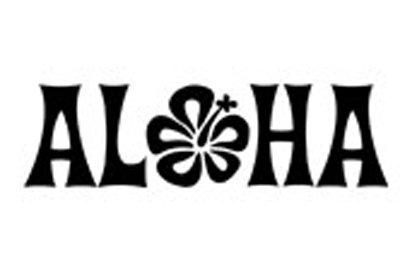
This discovery prompted Melissa to make an observation. She’s spent a lot of time in Hawaii, and she informed me that the drivers there are a unique breed.
Hawaiian drivers, apparently, tend to pull into traffic if there is any space at all to do so. Melissa’s theory behind this tendency is that they assume you’re not in a hurry – you’re in Hawaii, after all – so you’ll slow down to let them in.
Suddenly, the behavior of the offending driver looked completely different to me.
He hadn’t been aggressively vying for a spot. He was simply pulling his vehicle into an empty space. He assumed I was a chillaxed driver who had no problem letting him in.
But I was not a chillaxed driver.
Instead, I was an angry, prejudiced Goofball who was making up all kinds of stories about his motives and racial profile.
And, truth be told, I was still making up stories about him. Was he really Hawaiian? And, even if he was, what were his motivations for pulling in front of me?
I had no idea.
But it was interesting to note that the story I was telling after I found out he was presumably Hawaiian made me feel better than the one I had been telling before.
Which brings me to the question of this post:
How do we overcome the power of prejudice?
For the scholarly among us, there are some great resources. Why Are All the Black Kids Sitting Together in the Cafeteria? is one book I highly recommend. There’s also Understanding and Dismantling Racism, by Joseph Barndt. And Readings for Diversity and Social Justice, by Adams, Blumenfeld et al.
As for our day-to-day life, what can we do?
Well, we can make a practice of being on the lookout for our own prejudiced views and biases.
Not being aware of our prejudice is the biggest deterrent to its removal.
Like it or not, we all have prejudice inside us. The trick is to allow it to come forth so we can challenge its faulty assumptions.
Once we’ve uncovered these assumptions, we can ask ourselves: How does the story I’m telling about [fill in the blank] make me feel?
If it’s making us feel bad, we’re not seeing that person – or group of people – with the eyes of love. We’re not seeing them as the Divine sees them.
In other words, we’re not seeing the truth.
This is our chance to tell a different story!
My encounter with the presumably Hawaiian driver laid bare my assumptions not only about young white males, but my assumptions about everything I see.
I can make up stories all day long. Some make me feel good, and some make me feel bad. The feeling tone tells me which perceptions are in alignment with the Divine.
And which aren’t.
In the case of prejudice, it’s never in alignment with the Divine.
And that’s reason enough to root it out. To bring it into awareness. And to gently, lovingly, let it go.
There’s one more thing I discovered during my little driving adventure:
If I pull out in front of people unexpectedly, it gives them the chance to practice their chillaxed driving skills.
Plus it challenges their assumptions about transgender woo-woo Goofballs.
Just doing my part to make the world a better place!

photo: Melissa Phillippe
How have you overcome the power of prejudice? Share your comments below!
Want Sneak Peeks, Insider Info, and other Fun Stuff?! Become a member of OhMyGod Life!

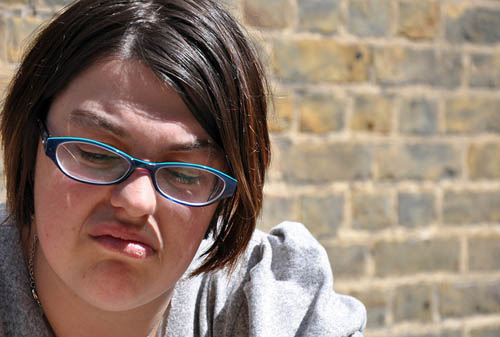
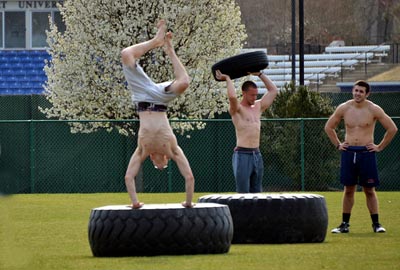
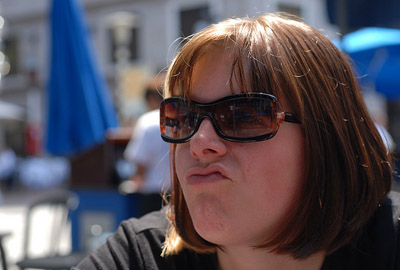

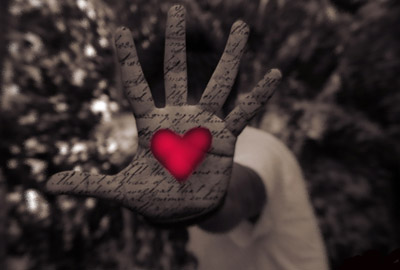
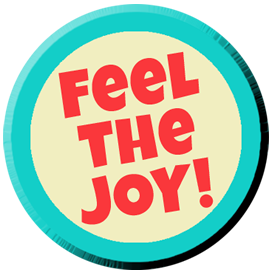
Prejudice against those who are prejudice is still prejudice. I have it and do not seem to have trouble holding back when I see it. In the political arena lies my lessons. Racism, homophobia and stupid fear based comments on face book have lessened my friends list when I respond to these statement. Maybe my reactions will lesson, maybe not. Watch out America. I’m watching.
Hi Jeffrey,
I hear you. I don’t know if there’s any arena more challenging to our prejudices that politics – no matter what side of the political spectrum you’re on. For me, I have to limit my exposure to the mainstream media so I don’t go crazy with it. But, as you point out, it’s everywhere, including Facebook. I guess we each have to find our own way.
Thanks for your comment!
XOZ
this is really great — I love that Melissa was able to give a different perspective, and that you were able to listen to her, and change your own ideas of the dynamics / upset. This is very important. bravo!
Hi Tanya!
Things always go better when I listen to my wife. 🙂
XOZ
Yes, it is a good thing in life that when someone wise tells you something worth listening to, that you listen fully — especially if that person is your spouse 🙂 but not everyone can listen when their beliefs are being challenged. it’s cool that you can.
Hi Tanya,
Thanks for that reflection. I can’t always do it, so thank you for reminding me that sometimes I can.
Happy Day-After-Turkey-Has-Been-Consumed! 🙂
XOZ
I used to believe that people who were chronically late were: insensitive, rude, thoughtless, passive-aggressive, angry, entitled…okay, fill in all the blanks…people. I’d take it personally if someone showed up ten minutes after they’d committed to arriving, like my time didn’t count.
I’m not talking about the occasional “got stuck in traffic,” or “the dog got loose just as I was leaving the house,” sort of thing…I’m talking about those who cannot or will not show up for any event at the prescribed time. Ever.
Sort of like talking with Melissa about the culture of Hawaii changed your take on the driver-thing, taking in new information is often the key to unpacking all those judgments I’d carried around. So, I asked. I asked a handful of chronically late people.
I’ve come to believe it’s just another of those human “things” like a tic, or a compulsion, or a disorder of some kind. None of them ever meant to do damage to others, or draw undue attention to themselves by arriving late, or imparting a message of entitlement. Just the opposite. They often felt shame, embarrassment, humiliation at their lack of being able to manage time. Okay…now I don’t have to take it personally, get all huffy and defensive.
My apologies to all those against whom I’ve held judgment in the past. Now, I just make sure I always carry a good book so I’ll have something to do other than fret and fume. Thanks, Z, for bringing this topic alive.
I’ve heard that one about late people. I was always early when I was young, and waited around for others to show. Lately I notice I am late a lot and have to work really hard to be on time, and here’s why: I always think I can get one more thing done, or I just need a minute to finish this before leaving. Then life happens. My new tactic is to set everything I’ll need near the door, get dressed and ready to go, and THEN go do that one last thing if there’s still time. It really helps!
Hi Naava,
You and I are one, sister!
In the past, I had a habit of being about 5 minutes late to things. This happens WAY less now, and I used a process similar to the one you described. The best thing about getting to places on time, for me, is that I have a more peaceful drive to my destination. That’s my best motivation to continue to make it work to be on time.
XOZ
Hi Jo,
My favorite part about what you shared is that you did a bold thing: You were willing to ask questions. You opened up your mind and heart to the very people you were making assumptions about. The information you received then changed YOU, not them. I love this. It so perfectly describes this process of spiritual growth, or personal growth, or just plain growth. And it all starts with being willing to ask questions. Of ourselves. Of others.
I’ve heard all kinds of theories about why people are late. Many of these theorists have all kinds of judgments about these “late” people. Do these theories really help anyone? Maybe. I don’t know.
I love that you came to your own conclusions.
Also, having a good book on hand is a great answer to any problem. 🙂
XOZ
I think I’ve relinquished prejudice simply by hacking around in the world and meetings lots of different sorts of people. I’ve learned that rednecks can be very intelligent, that blondes with lots of bling aren’t necessarily airheads, that athletes are sometimes quite studious, that old people can be fit and bright, and that TV reality show stars could possibly get into Stanford. (Well, maybe not that last one.) 🙂
Good insights, as always, Z.
Hi Karen,
Being out in the world is a great way to overturn all kinds of assumptions, isn’t it? I love the list you describe. I especially like the “old people can be fit and bright,” as for a long time I didn’t see this in the world, and I thought it just wasn’t possible.
Now anytime I see an elder who is bright and alive and thriving, I say: “That’s for me! I’ll take some of that.” Thank God that prejudices can always be overturned! 🙂
XOZ
LOVE this line, Z- “In the case of prejudice, it is never in alignment with the divine… “I am endlessly fasciniated by all the “unpacking” I am called to do. We are all densly , and some loosly compacted balls of predjudice made up of our social and cultural heritage. When I can stop myself from the reactive impulse to judge, my best practice is to imagine how the object of my derision or prejudice is loved and supported- by his or her loved ones. And by God. And by me, as an emmination of God. And to humble myself before their experience. I won’t delve into the world of white western priviledge here. This is more about engaging my humanity one-on-one. I once pissed off a driver on the freeway quite unknowingly. I infact changed lanes REALLY close, almost collided. Horns and tailgating ensued. It was the day my mother died and i was a mess- What it taught me is that I can always extend some compassion, All Ways. I can’t know what is going on in someone else’s world when they make a rude or dangerous drivng move. Just LOVE.
As to the chronically late… Thank you, Jo. I confronted such a person in a book study group I was facilitating and his response was that it never occured to him that anyone would miss him or care. Life changing understanding for all of us as we processed- what it feels like to be made unimportant and invisible in the world. We all count. We all matter. What we bring to every encounter is our whole socialization, enculturation and experience. Each unique. Each an opportunity for me to SEE YOU. If you do not beleive you are worthy of that, being late is not a big deal. To you.
LOVE. See and witness each other. LOVE.
Hi Martha,
This is beautiful. One commonality I see in what you share is that often, with just a little more information and understanding, healing can happen. Had that driver you cut off known that your mother had just died, it very well might have changed their reaction. And the person in your book group was blessed and changed by what you shared with him. I can related to that notion of feeling invisible and not understanding my impact on others. I also know that, ultimately, we do all want to love each other. It just feels so much better than the alternative. Like you say, it begins and end with LOVE. Thank you.
XOZ
Ah, what a wonderful read. I am on the couch with my small doggie on my lap, both of us under a quilt. I am not sick but after being too busy too long I am just too tired to move. Tomorrow, guests are coming and others have to do all the work because I am tapped. This brings me to my prejudice. Two of the guests coming to experience a Happy Thanksgiving, are born again Christians. They are not showing up to experience my prejudice and judgement. I have tried for years to get over my bias with intermittent success. Tomorrow I will pretend I am meeting them for the first time, without all my “stories” about the past. They have a right to their beliefs! They have a right to my love and appreciation!
Hi Betty,
First of all, I love the image of you on the couch with your little doggie on your lap. So cozy!
As for the born again Christians, I have to admit that this is an area that can be challenging for me as well. Especially when the prejudice is leveled at me as a gay person. I love this idea of approaching them as if meeting them for the first time. Beginner’s mind is certainly a place where love can bloom. Thank you for this! 🙂
XOZ
I’m a 62 year old woman who is still hasseled for being Gay and my Dr. said I’m
mentally ill and l’ve been holding on to the Loving God I have at cslsr thank you God for letting me know you love me and l’m trying not to do something stupid
to myself ever again. I love reaching out to Rev. Joyce Defulla mispelled. She treats me with Love and respect which helps tons.
Hi Kay,
Glad to know that you have CSLSR peeps and Rev. Joyce. (She is awesome, isn’t she?!) Knowing that you can be loving to yourself is also an awesome thing. 🙂
XOZ